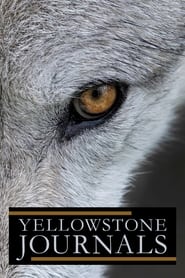Popular Documentary TV Shows on Amazon Video - Page 156
-
Big Tech
2024
Big Tech
2024
Explore the rise of tech giants. Facebook, Tesla, Amazon, Microsoft, Apple, and Google. This series uncovers the innovations, controversies, and impact on society, from reshaping industries to influencing daily life. Dive into the power and challenges behind the worlds biggest tech companies, shaping the future of our digital age. -
Fish My City With Mike Iacinelli
2018
Professional bass fisherman and TV personality Mike "Ike" Iaconelli searches for the world's most iconic fish living alongside some of the world's busiest concrete jungles. -
Military Machines: Nazi Germany in WWII
2024
This is the story of the creation of the Nazi War Machine, tracing their origins from street thugs battling in the German streets after The Great War. We show the growth of the Panzer Corps, the mighty Luftwaffe and the feared SS. This is the most comprehensive look at the military force that took Europe by a storm of blood and steel. -
Cities by the Sea
2016
Cities by the Sea
2016
star 10Cities by the sea are intrinsically defined by their position by the sea, an openness to the world, and a spirit of discovery and adventure. With the curious eyes of a stranger, the series wanders through: Barcelona, Dakar, Copenhagen, Tel Aviv, Vancouver, Hong Kong, Melbourne, St.Petersburg, Hamburg and Marseille. -
The Alien Files: UFOs Under Investigation
2004
This DVD collection takes a definitive, scientific look at the current state of the search for UFOs, documenting many sightings which have been debunked and more importantly, bringing viewers up to date on the most famous UFO investigations which still remain unsolved and unexplained to this very day! -
The Machines That Built America: Snack Sized
2021
The sped-up, super-charged, half-hour history of the top innovators and brands behind the machines that built America. Thrusting viewers from the surprising beginnings all the way up to the present day and spotlighting the story you didn’t know, filling in blanks you didn’t even know were there, from iconic names like Chevrolet, Boeing, and Harley Davidson. -
Dark Days in Monkey City
2009
Dark Days in Monkey City is an Animal Planet documentary about the lives of wild Toque Macaques in Sri Lanka. In the tradition of Meerkat Manor it followed the stories of individual primates, but differed from earlier shows by adding special effects and transitional animation. It was devised as part of Animal Planet's strategy to re-brand itself as an "entertainment" network. Its entire 13 episode run was broadcast in 2009. -
Alien Sharks: Ghosts of Japan
2024
Wildlife biologist Forrest Galante explores the alien world of Japan's oceans; teaming up with deep sea shark expert Christina de Silva, they search for the extremely rare Japanese angelshark, the ghost of the sea. -
Route 66
2012
Route 66
2012
-
Tuner Transformation
2019
Tuner Transformation
2019
Monster Garage meets Trading Spaces as expert tuners combine their efforts and use their unique abilities to transform lucky viewers rides into the ultimate performance machines. The tuners encounter all sorts of trials and tribulations while transforming every type of car known to man; from imports to domestics, street and race machines. -
The Politics of Climate Change
2019
We travel the world to see how the devastation wrought by droughts, wildfires, floods, and catastrophic rains – all the direct results of climate change – are a political problem, and require political solutions. -
Hunting Dinosaurs
2023
-
WWII by Drone
2021
WWII by Drone
2021
The old battlefields of World War II hold many secrets, including lost sanctuaries, buried atrocities, and forgotten heroes. Now, military experts and conflict archaeologists are using cutting-edge, drone-mounted technology to re-examine some of the European theater's most iconic sites and reveal their untold stories. From Maltese submarine wrecks to a top-secret research base in Scotland to the location of the Battle of the Bulge, this six-part series revisits seminal moments from history's greatest war from an entirely new perspective. -
Suppressed Science
2022
Suppressed Science
2022
star 3A series that mixes mind blowing real science with unsolved mysteries, global conspiracies, and true stories -
Out of Stock: Supply Chain Crisis
2021
The world has grown accustomed to stores filled with packed shelves, gasoline available at every station and online purchases arriving on time. But the pandemic has impacted every step of the supply chain, from manufacturing, to shipping worldwide, to transporting within a country, and even to stocking shelves. This limited series explores the complex shipping system at its best and how it has broken down, leaving goods stranded at docks and consumers panic shopping before holiday shortages ruin the upcoming season. -
Yellowstone Journals
2019
Yellowstone Journals
2019
star 1Nestled deep in the Rocky Mountains of the American west is a place unlike anywhere else on the planet. Yellowstone National Park is home to hundreds of animals that have adapted to survive in a harsh and dynamic landscape.
 Netflix
Netflix
 Amazon Prime Video
Amazon Prime Video
 Apple iTunes
Apple iTunes
 Apple TV Plus
Apple TV Plus
 Disney Plus
Disney Plus
 Google Play Movies
Google Play Movies
 Paramount Plus
Paramount Plus
 Hulu
Hulu
 HBO Max
HBO Max
 YouTube
YouTube
 fuboTV
fuboTV
 Peacock
Peacock
 Peacock Premium
Peacock Premium
 Amazon Video
Amazon Video
 The Roku Channel
The Roku Channel
 AMC+
AMC+
 Kocowa
Kocowa
 Hoopla
Hoopla
 The CW
The CW
 Vudu
Vudu
 Starz
Starz
 Showtime
Showtime
 PBS
PBS
 Pantaflix
Pantaflix
 FXNow
FXNow
 Tubi TV
Tubi TV
 Kanopy
Kanopy
 Comedy Central
Comedy Central
 Crunchyroll
Crunchyroll
 Microsoft Store
Microsoft Store
 Redbox
Redbox
 Sun Nxt
Sun Nxt
 ABC
ABC
 DIRECTV
DIRECTV
 Crackle
Crackle
 Fandor
Fandor
 Plex
Plex















